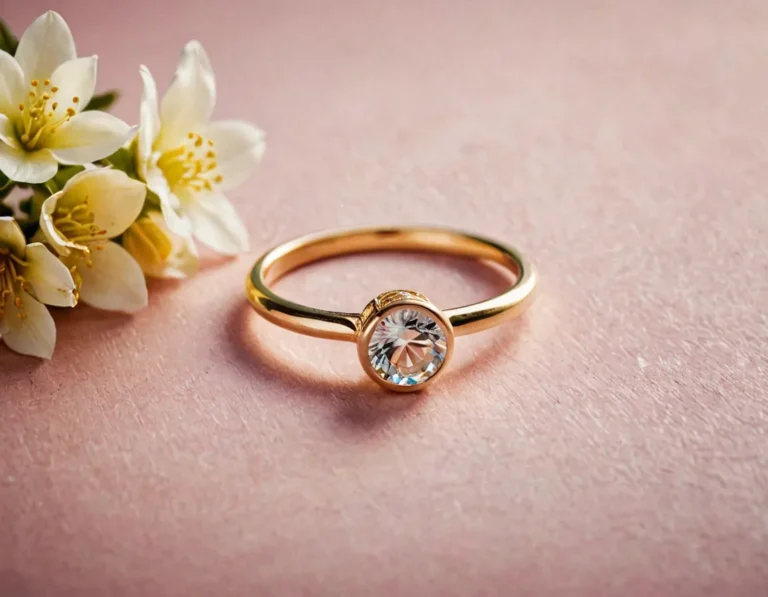Understanding Gold Purity and Karat Measurements
Gold has been treasured for thousands of years, not only for its beauty but also for its value and durability. If you’re looking to purchase gold jewelry or invest in gold, understanding gold purity and karat measurements is essential. This guide will help you navigate the world of gold purity, karats, and their significance.
Table of Contents
- What is Gold Purity?
- Understanding Karat Measurements
- Common Karat Values
- How to Test Gold Purity
- Why Gold Purity Matters
- Comparing Karat Values in a Table
- FAQs about Gold Purity and Karats
1. What is Gold Purity?
Gold purity refers to the amount of pure gold in a piece of jewelry or an item. Pure gold is 24 karats (24K), but pure gold is too soft for most practical uses. Therefore, it is mixed with other metals like silver, copper, nickel, and zinc to create a more durable alloy. The purity of gold is measured in karats.
2. Understanding Karat Measurements
Karat (kt or K) is a unit that measures the purity of gold. It indicates the number of parts out of 24 that are pure gold. For example, 18K gold is 18 parts gold and 6 parts other metals, making it 75% pure gold.
Gold Purity Chart:
| Karats | Gold % | Alloy % |
|---|---|---|
| 24K | 100% | 0% |
| 22K | 91.7% | 8.3% |
| 18K | 75% | 25% |
| 14K | 58.3% | 41.7% |
| 10K | 41.7% | 58.3% |
| 9K | 37.5% | 62.5% |
3. Common Karat Values
24K Gold
- Purity: 100%
- Uses: Investment, electronics
- Color: Bright yellow
- Pros: Highest purity, non-reactive
- Cons: Very soft, prone to scratches and dents
22K Gold
- Purity: 91.7%
- Uses: High-end jewelry
- Color: Rich yellow
- Pros: High purity, good balance of durability
- Cons: Softer than lower karat gold
18K Gold
- Purity: 75%
- Uses: Fine jewelry
- Color: Deep yellow
- Pros: Good durability, retains luster
- Cons: More expensive than 14K, softer than lower karats
14K Gold
- Purity: 58.3%
- Uses: Everyday jewelry
- Color: Moderate yellow
- Pros: Good balance of durability and purity, affordable
- Cons: Less pure, but more durable
10K Gold
- Purity: 41.7%
- Uses: Affordable jewelry
- Color: Light yellow
- Pros: Very durable, affordable
- Cons: Lower purity, may cause skin irritation
4. How to Test Gold Purity
There are several methods to test the purity of gold:
- Acid Test: Uses nitric acid to determine purity. Different acids react with different purities of gold.
- Electronic Tester: Uses electronic signals to detect gold purity.
- X-ray Fluorescence: Non-destructive method using X-rays to analyze metal content.
- Hallmarking: Official stamps on gold indicating its purity.
5. Why Gold Purity Matters
Understanding gold purity helps you make informed decisions when buying gold. It affects:
- Value: Higher purity means higher value.
- Durability: Lower karat gold is more durable but less pure.
- Color: Different alloys create different colors.
- Hypoallergenic Properties: Higher purity gold is less likely to cause allergies.
6. Comparing Karat Values in a Table
Here’s a quick comparison of the common karat values:
| Karat | Purity | Durability | Common Uses | Price | Color |
|---|---|---|---|---|---|
| 24K | 100% | Soft | Investment, electronics | $$$$$ | Bright yellow |
| 22K | 91.7% | Softer | High-end jewelry | $$$$ | Rich yellow |
| 18K | 75% | Durable | Fine jewelry | $$$ | Deep yellow |
| 14K | 58.3% | More Durable | Everyday jewelry | $$ | Moderate yellow |
| 10K | 41.7% | Very Durable | Affordable jewelry | $ | Light yellow |
7. FAQs about Gold Purity and Karats
Q: What is the best karat for daily wear?
A: 14K and 18K gold are best for daily wear due to their balance of purity and durability.
Q: Can I wear 24K gold every day?
A: 24K gold is very soft and can easily get scratched or bent, so it’s not ideal for daily wear.
Q: What does “hallmarked” mean?
A: A hallmark is an official mark or series of marks stamped on gold to certify its purity.
Q: How does the color of gold change with different karats?
A: Higher karat gold is more yellow due to higher gold content. Lower karat gold may appear paler due to more alloy metals.
Q: Is higher karat gold more expensive?
A: Yes, higher karat gold is more expensive because it contains a higher percentage of pure gold.
Understanding the differences in gold purity and karat measurements helps you make better choices, whether you’re buying gold jewelry for fashion or investing in gold for financial security. Always check for purity and make sure you are buying from reputable sources.
